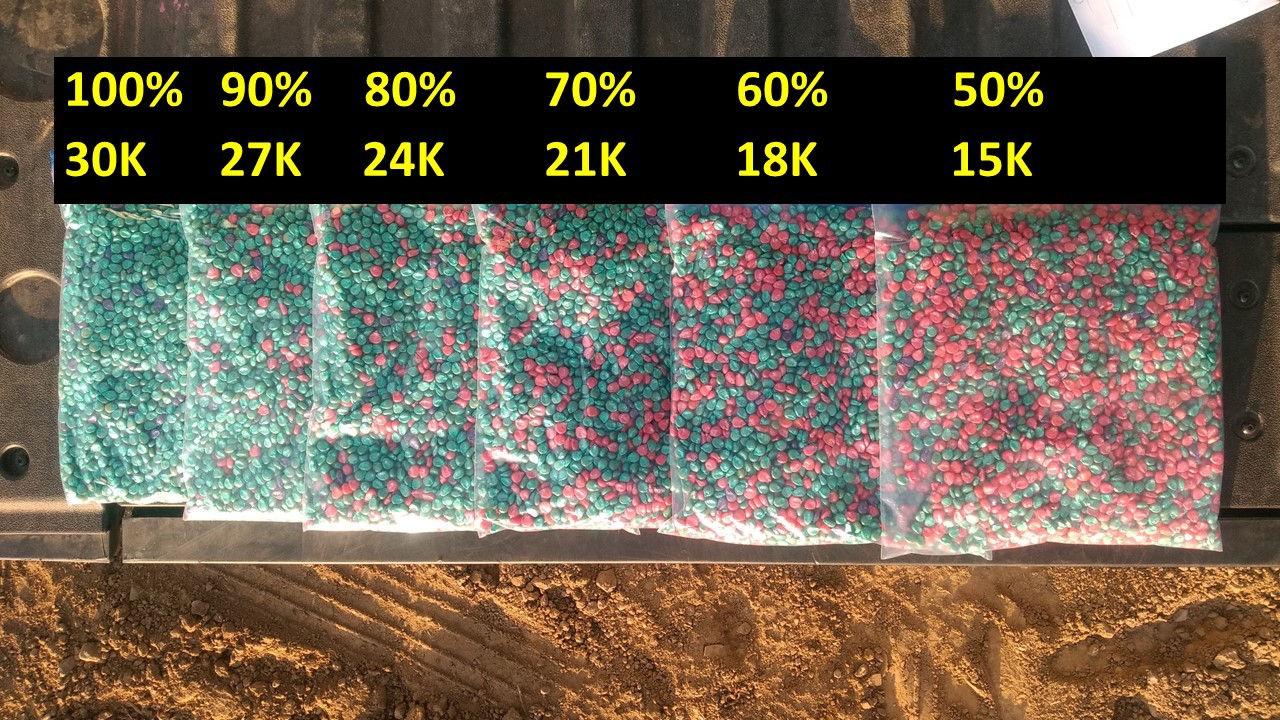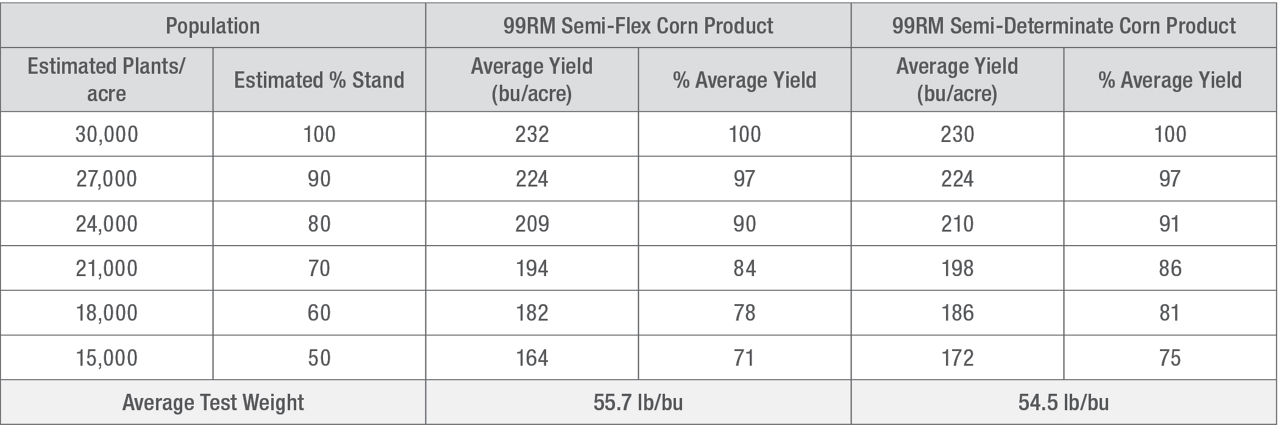Yield Reduction in Variable Corn Stands
March 28, 2023
TRIAL OBJECTIVE
- There are many issues that may contribute to reduced corn populations including planting, insects, diseases, and/or environmental conditions. Replanting is not an easy decision, and numerous factors determine a crop’s yield potential.
- The main objective of the trial was to determine how much loss in yield potential can be expected with reduced plant stands and when a replant is justified.
RESEARCH SITE DETAILS
Location
Canandaigua, NY
Soil Type
Loam
Previous
Crop Corn Tillage
Type Conventional
Previous
Crop Corn Tillage
Type Conventional
Planting Date
05/24/22, 06/07/22
Harvest Date
11/09/22
Potential Yield
(bu/acre) 250 Seeding Rate
(seeds/acre) 30,000
Potential Yield
(bu/acre) 250 Seeding Rate
(seeds/acre) 30,000
- This study was planted at the Bayer Market Development Research Farm located in Canandaigua, NY.
- The trial was a complete randomized design with four replications.
- Individual plots where 10 feet wide by 250 feet long.
- Plots were planted in 30-inch rows with a four-row planter.
- 210 lb/acre nitrogen was split applied with 50 lb/acre applied as a 2x2 starter and 160 lb/acre applied sidedress at V3.
- 25 lb/acre phosphate and 160 lb/acre potassium was preplant applied.
- All other agronomic inputs followed local standards.
- Two 99 -relative maturity (RM) corn products were used for this trial.
- One semi-flex ear corn product and one semi-determinate ear corn product.
- Six plant populations were tested 30,000, 27,000, 24,000, 21,000, 18,000, and 15,000 seeds per acre. This represented 100%, 90%, 80%, 70%, 60%, and 50% of the desired population respectively.
- Randomization of plant placement was done by mixing corn product with glyphosate-resistant trait with conventional non-traited corn at ratios of 100:0, 90:10, 80:20, 70:30, 60:40 and 50:50, respectively (Figure 1). Plots were sprayed with glyphosate at the V3 growth stage to kill the conventional corn to mimic stand reduction.
- A second planting of both corn products at 30,000 seeds per acre was planted two weeks after the initial trial to check yield reduction due to late planting.
- Average yield (bu/acre) determined by harvesting with a Kincaid 8XP small plot combine using the two center rows of the plot to collect weight, moisture, and test weight data.
- All yield data was corrected to 15.5% moisture.


UNDERSTANDING THE RESULTS
Table 1. Loss in yield potential for two corn products due to reduction in stand or replant (Canandaigua, NY, 2022).

- The average yield loss for both corn products was not proportional to the loss in plant stand (Table 1).
- The 99RM semi-flex ear corn product planted two weeks later yielded 194 bu/acre with a 54.3 lb/bu test weight.
- The 99RM semi determinate ear corn product planted two weeks later yielded 204 bu/acre with a 53.1 lb/bu test weight.
- Data from this 2022 study indicates that under these growing conditions and using these corn products it took a plant stand loss of over 30% to justify replanting the semi-flex corn product two weeks later. In this study, the replanted crop did not out yield the original planting with a 70% stand loss (Table 1).
- Similarly, it took a stand loss of over 20% of the semi-determinate corn product for replanting to be warranted.
- The additional crop revenue from a replanted corn crop must consider the added replant costs.
- Understanding how uneven emergence impacts yields is a factor that was not considered in this trial.
KEY LEARNINGS
- This study demonstrates that even with significant population losses, yield potential may be as good or better than yields obtained from a replant.
- In addition to comparing yield potentials, the cost of replanting should also be considered. Additional replant costs include destroying the original crop, replant seed cost, labor, equipment, and potential additional herbicides.
- Always ask your agronomist or seed dealer for the recommended planting population for your area and the corn products used. A 30,000 seeds/acre population was used for this trial but does not guarantee optimal yield return for all corn products.
1210_187857